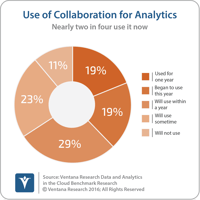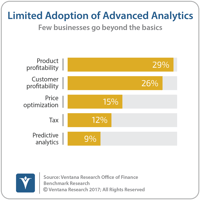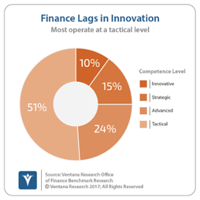Recent advances in workforce management (WFM) software are rewriting the way organizations tackle hourly workforce management and related administrative challenges. This is largely due to improvements in the design of business processes and a focus on enabling more hassle-free user experiences. The result is fundamental changes in how workers account for their time and request PTO, as well as how they access information on payroll, benefits and other company policies. These advances are also...
Read More
Topics:
Human Capital Management,
HRMS,
Workforce Management,
Work and Resource Management,
Payroll Optimization
All too often, software vendors view analytics as the end rather than the beginning of a process. I’m reminded of some of the advanced math classes I’ve taken in which the teaching process focused on a few key aspects of a mathematical proof or solution, leaving the rest of the exercise to be worked out by the students. In other contexts, you may hear people say the numbers speak for themselves.
Read More
Topics:
Data Science,
Machine Learning,
business intelligence,
Analytics,
Collaboration,
Data Governance,
Information Optimization,
Digital Technology,
collaboration for business
PROS Holdings is a software vendor with two distinct but related sets of products. The company began in 1985 offering revenue management software to airlines, hospitality and rental car companies. More recently it added price and revenue management software focusing on B2B services, chemicals and energy, consumer goods manufacturers, food and beverage, healthcare, insurance and technology. This note focuses on the B2B portion of the business.
Read More
Topics:
Big Data,
Sales,
Customer Experience,
Marketing,
Office of Finance,
Analytics,
Data Preparation,
Sales Performance Management,
Financial Performance Management,
Price and Revenue Management,
Digital Marketing,
Digital Commerce,
Pricing and Promotion Management,
Sales Enablement and Execution
Was accounting ever cool? Well, yes, in a nerdy sort of way. Double-entry bookkeeping, codified in the 15th century by Fra Luca Pacioli, a Franciscan friar and pal of Leonardo Da Vinci, was essential for the expansion of trade and the creation of the modern corporation. Bookkeeping and accounting were as important to economic development as two other financial inventions – insurance and fractional reserve banking. Double-entry bookkeeping is an elegant system, simple yet powerful. It supports...
Read More
Topics:
Big Data,
Office of Finance,
Continuous Planning,
business intelligence,
Analytics,
Financial Performance Management,
Enterprise Resource Planning,
ERP and Continuous Accounting












